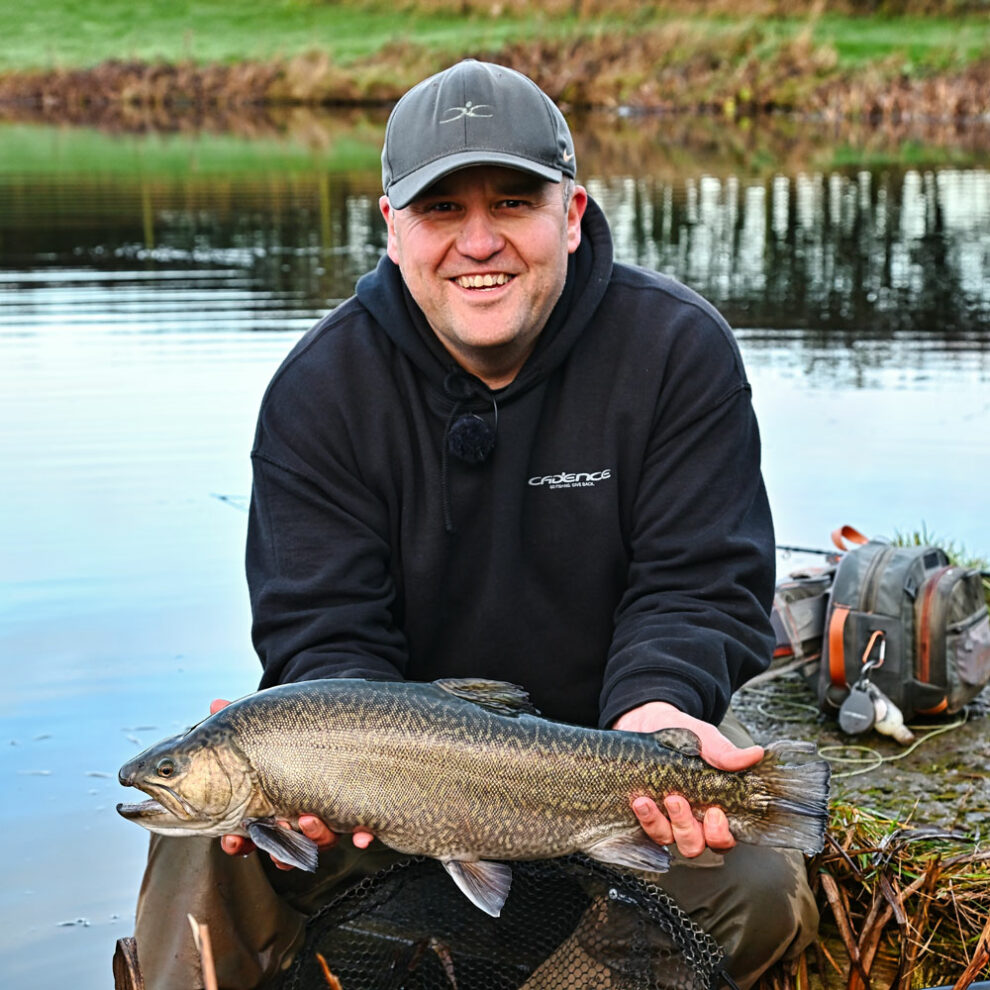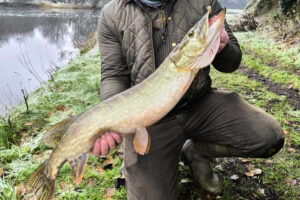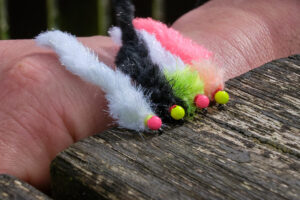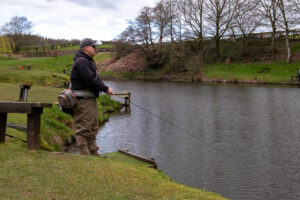When it comes to small stillwater’s, some of the most consistent and memorable months come in winter.
You may not be dry fly fishing, which is most peoples favourite way to catch rainbows and browns, but you will be targeting fish that are more active for longer parts of the day than at any time of year. It’s my favourite time, unquestionably.
There may be very occasional windows when you can put a dry fly out, but for the bulk we’re dealing with subsurface fishing and there are several things to consider that are different to Spring and Summer fishing.
Lake conditions
The weed that most fisheries struggle to keep on top of over summer will start to die back. Meaning, water you thought was 3ft deep in summer may turn out to be 6-7ft in winter.
The clarity of the water varies a lot more as well. The gin clear environment of summer is more likely to be replaced with more coloured water from additional rain and snow we get in the darker months. Some lakes will remain clear, but on balance we’re dealing with murkier conditions.
And with more coloured water comes less visibility of the angler to the fish. Alongside less visibility of terminal tackle and fly lines. Which is in no way saying they can’t see things – they just can’t see quite as much from as far away. It’s not an excuse to start doing star jumps on the skyline, though, so keep things in your favour by staying low and still, where possible.
Perhaps most crucially is the lower water temperature. Down to a much more trout favouring level. Ice around the margins is not an issue and the fish will remain quite active through most of the day. It’s only excessive snow or ice that would stop me fishing the small waters in winter. The kind of stuff that makes driving difficult – otherwise, any lake is fair game for a session.
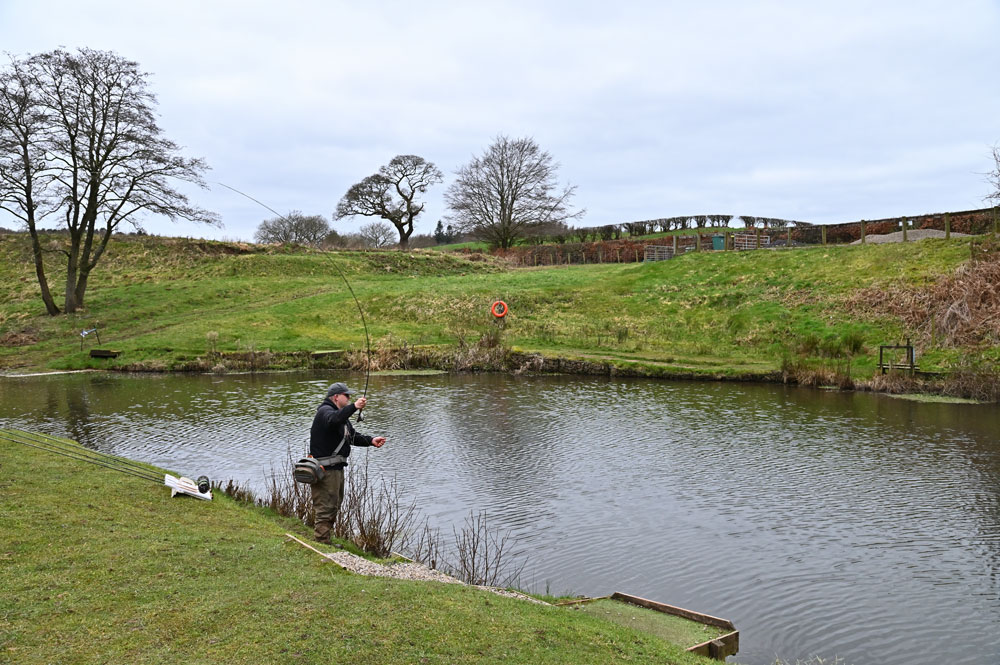
Weather
Obviously, it’s going to be colder, but what are we looking out for as ideal conditions in winter?
The two phrases that remain constant throughout the year are:
“Bright and Breezy – never easy.”
“When the winds in the east, the fish bite least.”
By elimination, the best conditions in winter are nearly the same as summer (temperature aside). Cloud cover is always good. Although, a little sun in the winter is pleasant, you will catch more fish when the sun is covered up. Most of the time, anyway.
Westerly winds are generally best as well. You can’t beat a steady westerly.
And then there is consistency. Sudden changes to the weather are typically never a good thing if you fish on the first day of the change. As long as the weather has been the same for a few days previous, you should be fine.
The best example of this is fishing after the first frost. It can be very, very difficult. But if you fish after the tenth frost in a row, for example, the fishing should be fine as the fish have adapted.
Bone chilling temperatures and ice are absolutely fine, as long as it’s established and settled in the previous few days. You may encounter slower periods in the day, but there are usually two or three hours the fish will be active enough to take a fly.
Ice offers another alternative as well. Something that never dawned on me until Cadence Fly Fishing Colleague James Robbins told me his coarse fishing matches on canals often showed the fish would be under the ice and fishing along the edge was far better than fishing open water. So far, I have found trout are definitely worth a cast along these edges, unquestionably. Although the water characteristics under the ice will be a contributing factor in this as well. Don’t bother fishing areas 6 inches deep with an ice edge over them, for example.
And please keep in mind what has gone before your fishing session. You might have a lake full of snow melt, but the day’s conditions seem perfect when you pull into the car park. Underwater, things may not be perfect for the fish when they are dealing with a sudden influx of cold water the day before from rain or snow. So you also have to consider the unseen. Plus, they’re great excuses for not catching.
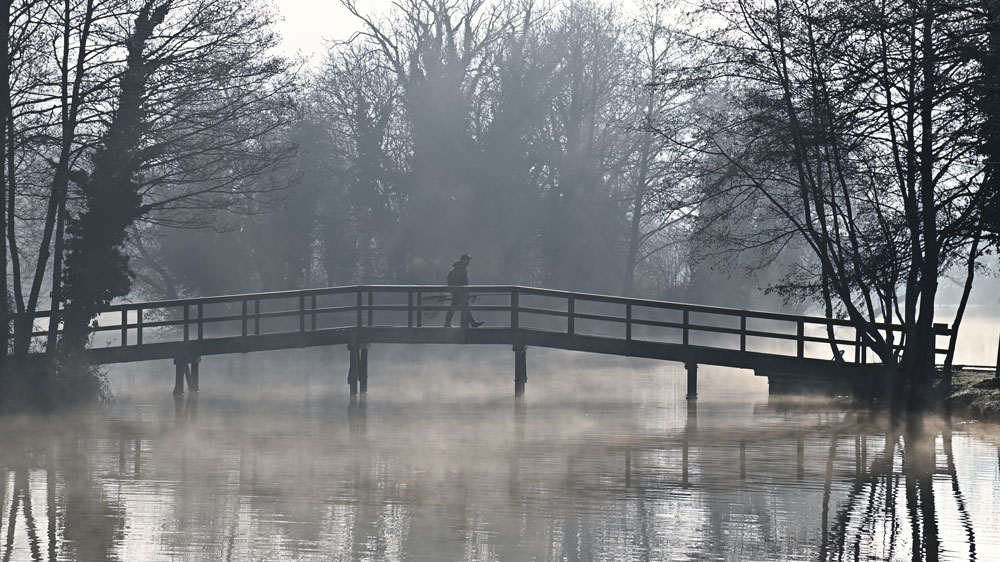
Time of day
Without offering any statistical analysis, my own feeling is that mornings can be good – perhaps because no-one has fished the lake through the night and the fish have lost a little caution. But I suspect it’s more to do with temperatures and light and the preceding hours of darkness.
Perhaps the most reliable time in winter is the middle of the day. Around 11am to 1pm.
Once you get beyond 1pm, it can go both ways, but I find the last few hours to be the worst of the three “sub sessions” overall. That said, I’ve had some cracking times coming towards dark, so it’s not a clear-cut statement. Every lake is different and different weather patterns can dictate different behaviour. Keep your mind open, basically. But if you want to hang your hat on a 4-hour session, I’d go with 9am to 1pm.
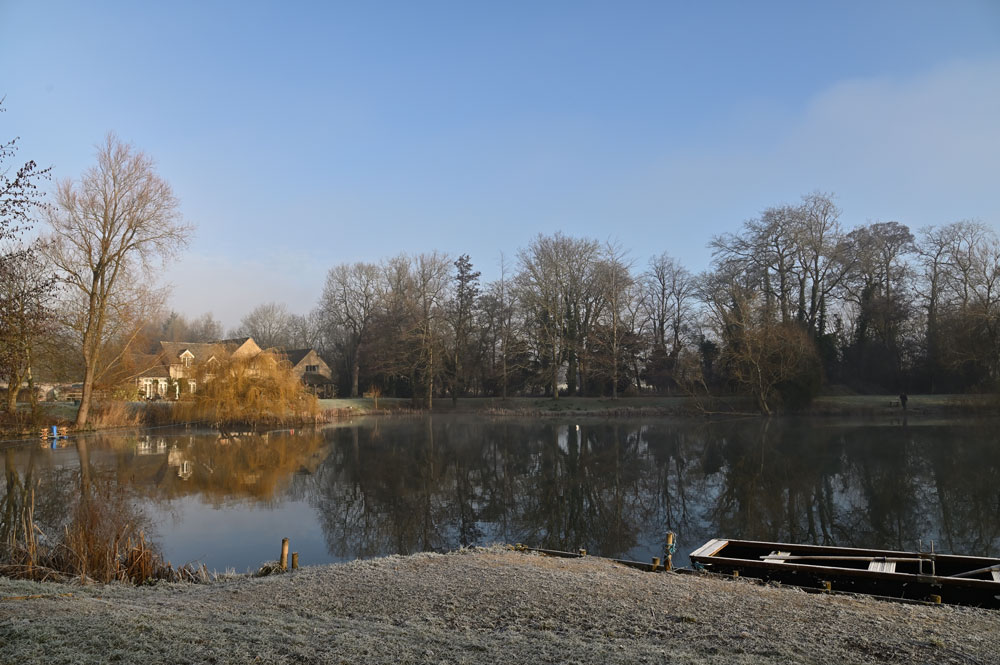
Keep warm
The subject of a whole separate article, one I cunningly prepared earlier, that you can read here.
Stating the bleeding obvious, but if you can keep yourself warm, you will keep fishing well and catch more fish. Shivering anglers will tend to fish more impatiently, retrieve too fast, lift off too early and have minimal concentration. We’ve all been there. Think about what you wear and plan for it before you go fishing in winter.
In summary, don’t wear clothes that would take ages to dry, wear several thin layers and keep the wind out.
If you can’t keep yourself warm, you won’t be fishing for long and it will be a wasted journey. A flask of tea won’t cut it on the coldest days.
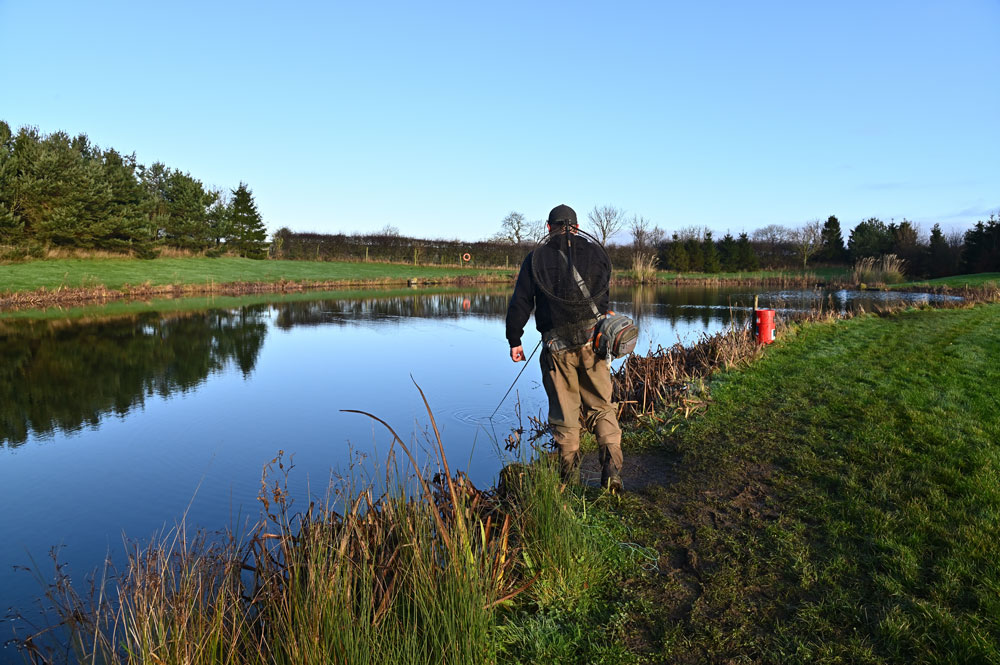
Fish
Winter tends to be the time of year when fisheries put bigger fish in and stock a little more regularly. You are more likely to catch a PB in winter than in summer.
In short, bigger fish tolerate the colder conditions far better than hot. And once they have become “wilded” over a few months in winter, are in less danger from the hot weather than if they were stocked into a water bath in August.
And with the various rules and regulations on stocking, the vast majority of the fish will be triploids – neither male nor female, basically.
This has revolutionised winter fishing from the 1980s and 90s, where fish would colour up and lose condition for spawning. Now we have fish that are active all year round and fight really well. These fish are also far more edible than in the past, if you like to take a few home.
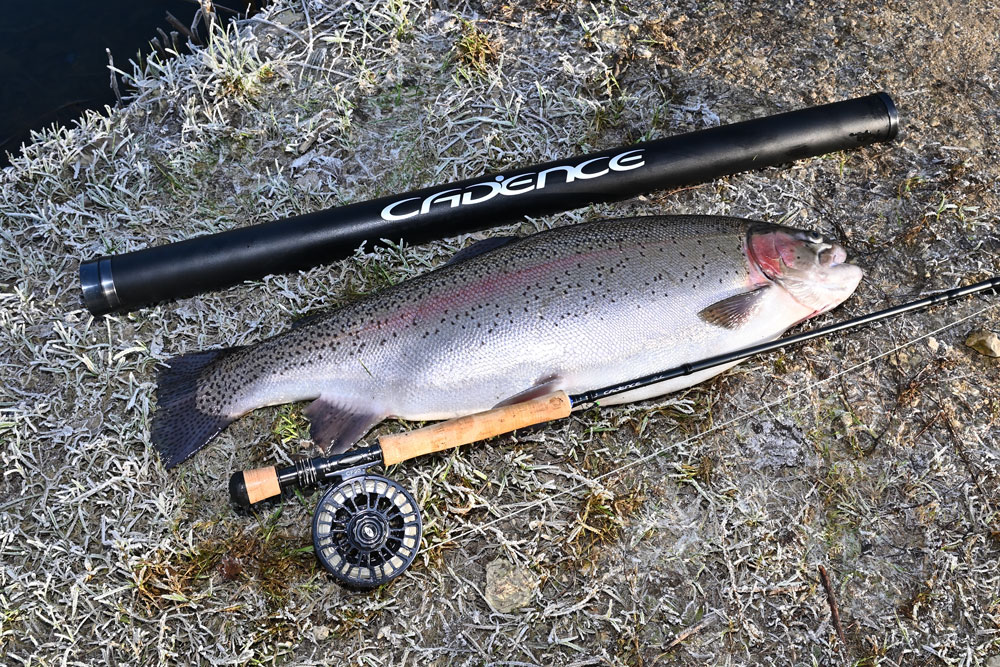
Tackle
Due to the weather in winter, you are probably more likely to fish slightly heavier line ratings, on average – compared to summer. And you are most likely going to be fishing sinking lines a little more regularly as well. The wind alone is likely to demand a heavier fly line than a gentle breeze in summer, so the #7 and #8 rods will possibly take over from the #5 and #6 rods when it comes to pulling. (I’ll still use the lighter weight rods for indicator fishing due to the lighter line picking up off the water better.)
I would always, always have the Cadence CSM 9ft 9in #8 for sinking line fishing in winter. It’s a non-negotiable and handles lines such as the Airflo Di-3 and Di-5, Rio Camo Intermediate and all other sinking lines as perfectly as a rod possibly could. It sends them like a dream and has enough backbone to bring in the biggest trout in the UK, while feeling light in the hand. This one’s a no-brainer.
Beyond that, your standard Cadence CSM 9ft 6in #7, CSM 10ft #7 and CSM 10ft #8 will also be great winter rods.
Leader wise, you are probably going to want to beef that up a little as well. Anything up to 10lb Fluorocarbon, depending on fly size. The bigger the fly, the heavier the leader. I use Edge Fluorocarbon Pure for my leaders.
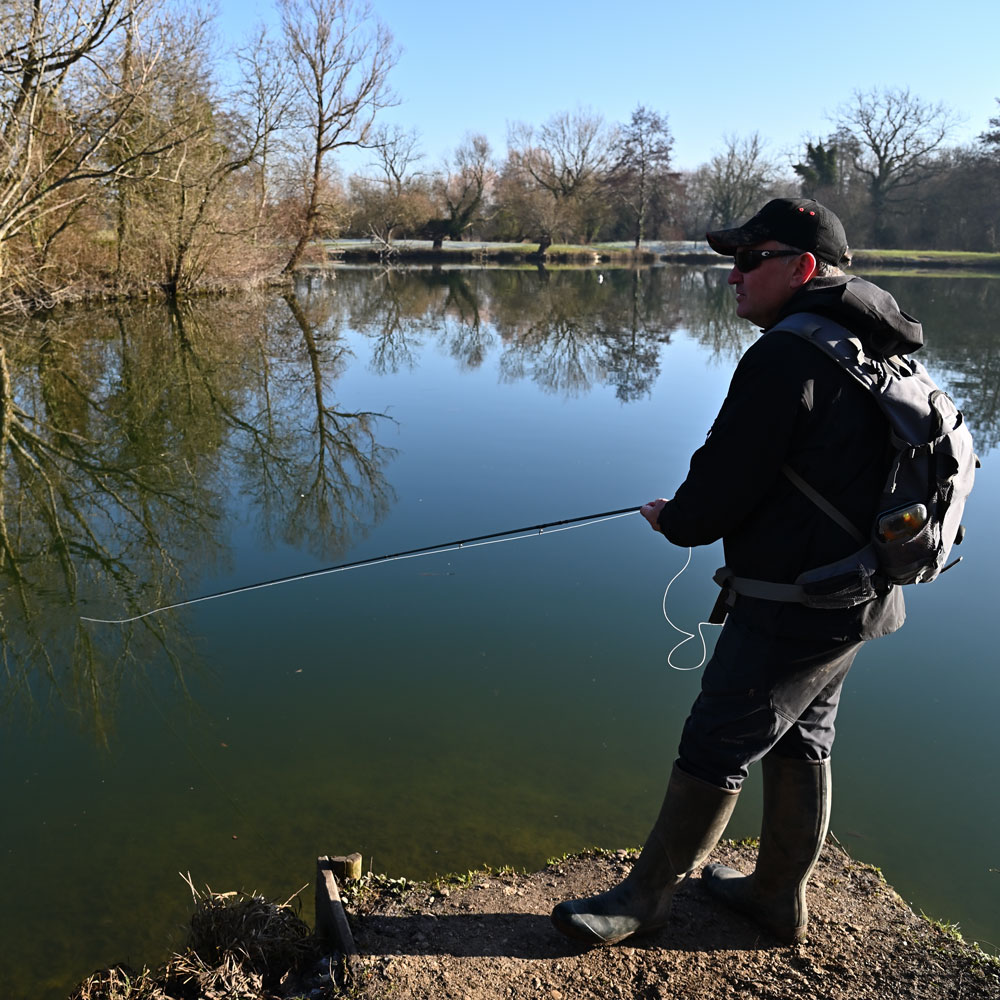
Flies
Everyone’s favourite fly fishing subject, and another one for a separate blog. Maybe “Top Ten Flies for Winter Fishing?” In general, you are probably going to deviate away from the smaller natural flies, to bigger, nastier lures in winter. You can fish nymphs and buzzers all year round, but the average fly will be a little gaudier overall in winter.
I generally like a bit of weight in the fly as well – so bead chain eyes in the head, for example, can work wonders. As much to help the turnover in stronger winds, but also to take the fly down better with the line.
You won’t go far wrong with black snakes, white snakes, Apps Worms, Cats Whiskers and Blobs if you just want a quick selection. And if you want to go for a natural, the most likely fly in winter is the midge. So try a bloodworm.
One point to note is when the water is super muddy and visibility is down to centimetres. I have more faith in black flies than any other colour. It’s a much more solid shade and stands out far better to me than anything else. That said, fish have superior vision to humans and will still be able to pick stuff out that we can’t. It’s not the be all and end all, but perhaps head to darker over lighter in very coloured water? And slow the retrieve down.
Reading the water
There’s unlikely to be much rising in winter to help direct you to the best fishing spots, so where on earth do you start?
The first rule is fish the bank the wind is blowing onto. And if you can find a little more depth along this bank, so much the better. Accept you won’t cast as far. The fish will be closer in anyway.
Don’t just go for the windward bank, either. Look at the angle the wind is blowing onto that bank and fish the end it’s heading more towards. If you find the wind is blowing into a corner rather than onto a long bank, that corner can be red-letter territory.
Find out the different depths in a given lake. All can have their day on small waters over winter. But shallowish to medium depth water can be excellent. Let’s say, 3ft deep near an inlet can be perfect, before it drops into deeper water. The ends of bays are classic places for this scenario.
Inlets can be feast or famine, though. Sometimes the water is too cold or dirty and the fish can avoid it. Other days, fish are very close by. It’ll only take a few casts to find out.
And like any other time of the year, points can be good as well. As can drop-offs and old weed beds.
On most small waters, though, you will have a chance of fish anywhere, so keep changing places until you find a few fish. 15 mins in each spot is about right. Which isn’t reading the water, I know, but occasionally, you can’t see what is influencing the fish, and it’s simply down to trial and error.
If I know the depths of the lake, I will definitely try the deepest spots as well. At all depths from top to bottom. The fish can be anywhere, depending on temperature, dissolved oxygen and available feeding. Experiment.
Fishing techniques
The floating line is less likely to get used in winter – but still has a place in indicator fishing, obviously.
For pulling flies – and by that, I mean flies you are going to retrieve almost back to the rod tip – most people will be using a fast intermediate down to a Di-3. Roughly translated as lines with sink rates between 1.5 inches per second down to 3 inches per second. If you only have one sinking line, go with the fast intermediate (1.5ips) as your best all-rounder.
Fish are often only 3ft-4ft down, so you generally don’t want a super fast sinking line to go bombing past them to empty water beneath.
If no-one is catching anywhere on the lake, that’s when the fast sinking line may save the day and a Di-5 comes into its own. Not many fish fast sinkers, and they can save the day in deep water if conditions dictate the fish are lying way down. On balance, the intermediate will be your main fish catcher, though.
Retrieves would tend to be slower in winter, so maybe focus on the figure of 8 retrieve rather than fast stripping. This statement is open to contradiction, however, so try all retrieves, as the fish will come ripping after a fast-stripped fly on the coldest of days as well. On balance, I prefer a very slow roly-poly or figure of 8, though. (We’ll put a video up on the Cadence Fly Fishing YouTube channel to show these).
And do not ever forget the hang. That’s the stage between the retrieve finishing and you lifting off to cast again. Fish following a big snake fly in winter may just be seeing it off the premises. But leave it hanging in the water before casting can make it turn into an easy meal and catch a high proportion of your fish that day.
As a rough rule, stop the retrieve and, with the rod top up high, leave the fly static under the surface for between 3 and 5 seconds. You are looking for a flash, but especially the sagging line moving forward near where it enters the water. It’s surprising just how many fish will take at this stage. They’re not always easy to hook, but it’s better to get takes than not and if you end up expecting a take, you are more likely to hook the fish next time.
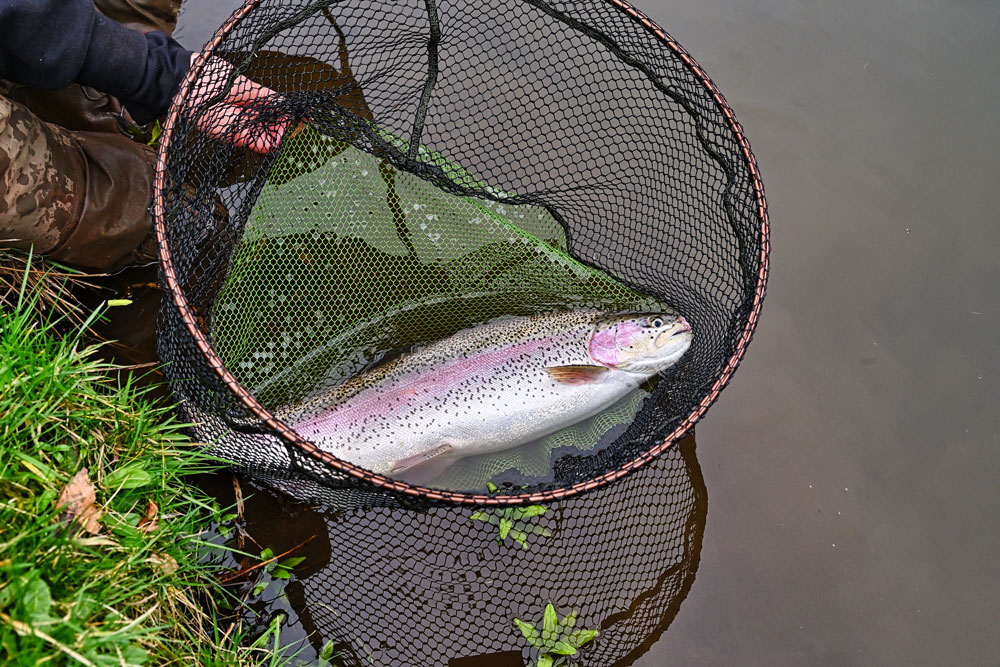
Depth wise, it’s the time served method of casting the sinking line out and counting. 5 seconds down on the first cast, 10 seconds down on the second cast, 15 on the third etc. And don’t forget the retrieve without any sinking time as well. Feel your way in. If you are getting takes on the count and before the retrieve, that is significant and shows where the fish are. So don’t count as far on the next cast. You’ll spot the pattern eventually, so trust yourself.
More than anything, though, concentrate on the fly dropping just after casting. It’s why good turnover is imperative, as it means you are in direct contact from the second it lands. So many fish take on the drop, and it’s the key time of any cast, alongside the first couple of seconds of the retrieve.
Sometimes you might just get a take from a lone fish that gives no clues where the bulk of fish are. Be just as careful not to believe everything you feel. One fish over three hours doesn’t confirm they are all at that depth and want it retrieved like that. 15 takes over half an hour might. Go on the weight of evidence, not on one occurrence.
Indicator fishing is generally at its best in winter as well. And it can be deadly on very still days when retrieving flies are completely ignored. There is no movement in the water with no wind, so static may seem more natural. And the indicator allows this.
If nothing has happened at one depth after three casts, change the depth significantly for the next three. So start at 2ft, then 4ft, then 6ft and then 8ft. If the water is deep enough, I will happily drop to 12ft if fishing is hard.
So there we have it – a whistle-stop tour of winter fishing. It’s not all encompassing, and you will find your own tips to catch more fish above the tips I’ve shared in this blog. These are only guidelines and always open to contradiction.
But if you look at the numbers of anglers on the bank at different times of year, most people are fishing for trout when the conditions are at their worst in the summer and pack their rods away before it gets really good in the winter. Maybe it’s time to change that if you are one of those? You’ll catch more fish if you time it right.

